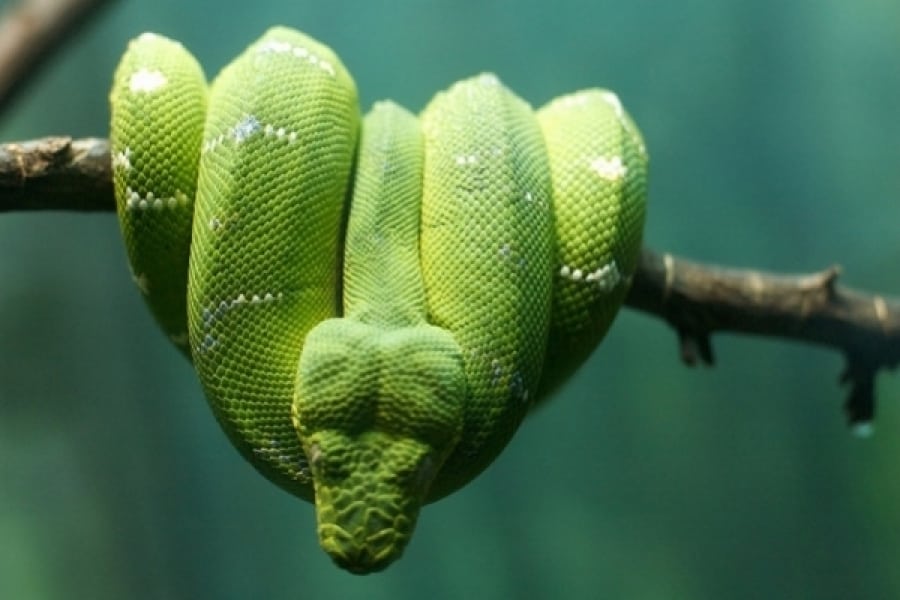
Scientific Name
- The scientific name of Emerald Tree Boa is Corallus caninus.
Description
- Typically the color of emerald is green with zigzag strips and a white color shade between the strips.
- They have yellowish skin underneath.
- Juveniles are normally orange or yellow in color with inconsistent markings.
- They looked similar to Green Tree Boas.
- They are nocturnal animals and hunt at night by waiting for their prey to approach them.
Distribution
- The snakes are found in South American countries such as Brazil, Ecuador, Colombia, Peru, Bolivia, Guyana, and Suriname.
Breeding
- The gestation is about 5 to 6 months.
Nesting
- An adult female snake will normally give birth to 2 to 15 live baby boas.
Size
- On average, an adult snake’s size is about 1.8 meters.
- However, certain snakes can grow up to 2.7 meters.
Life Span
- Emerald Tree Boa can live up to 15 to 20 years in the wild.
Diet
- This is a carnivore reptile, which means that they only eat other animals or meat.
- In nature, the preys are small mammals, lizards, frogs, or birds.
- In captivity, you should be cautious about the food size. These snakes should be fed with small rats or mice. The large size of food fed may result in regurgitation.
- Feeding frequency is approximately 18 to 22 days.
Habitat
- This snake is commonly found in Brazil, Guyana, and Suriname.
- You may notice that Emerald tree boas that are found near the end of Peru are normally darker in color, but they belong to the same species.
- They often live near large swamps or marshes, or rivers in the rainforests of South America.
- Temperature and humidity are important for digestion and metabolism.
- In captivity, temperature should not be above 32°C and below 21°C for 5 days after feeding.
- Ideally, the humidity should be around 85%.
Common Disease
- Impaction and regurgitation result from improper temperature control after feeding.
